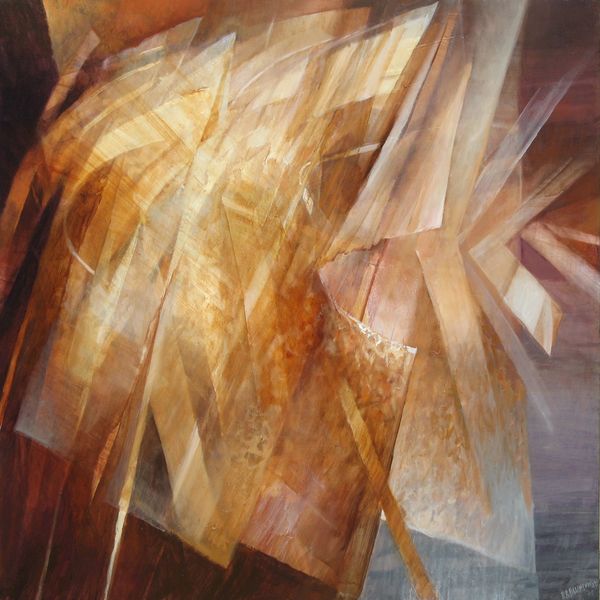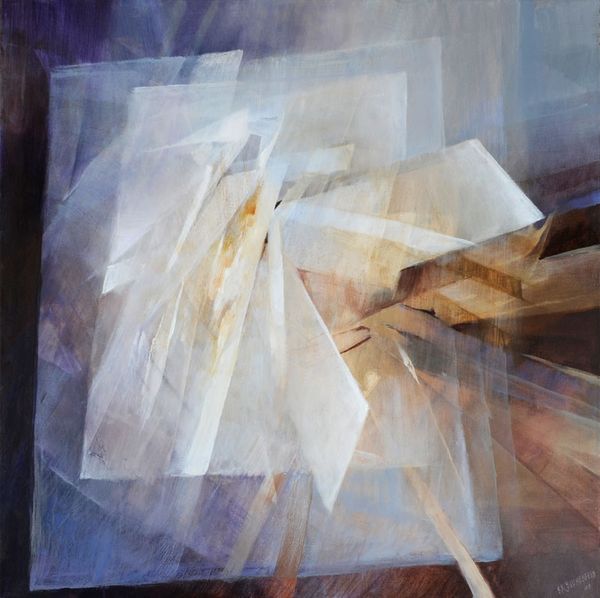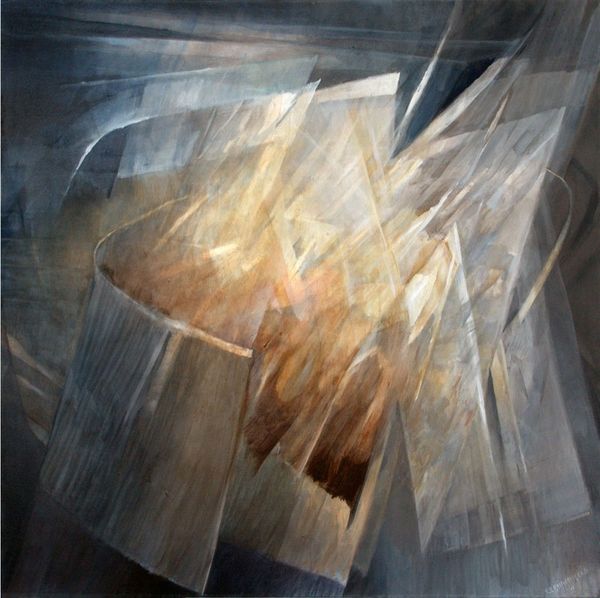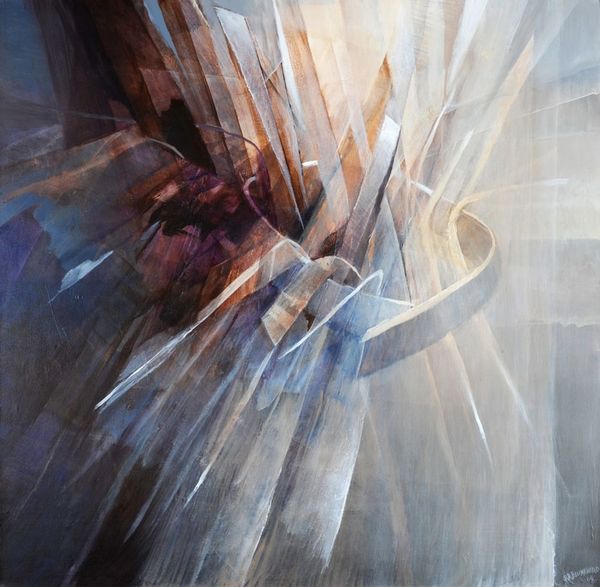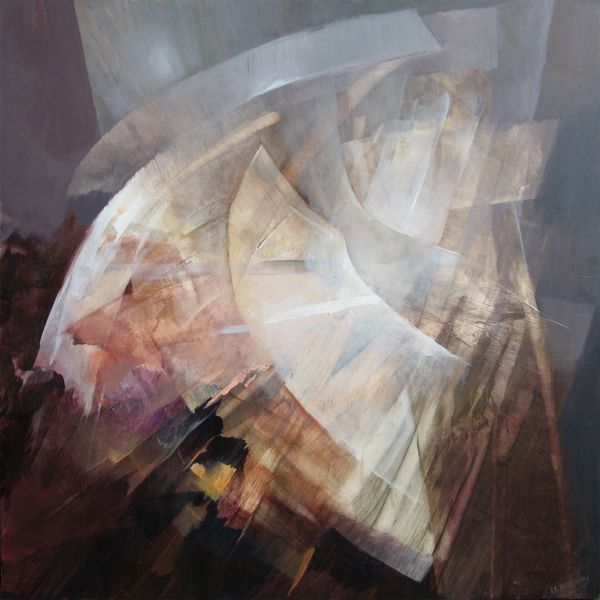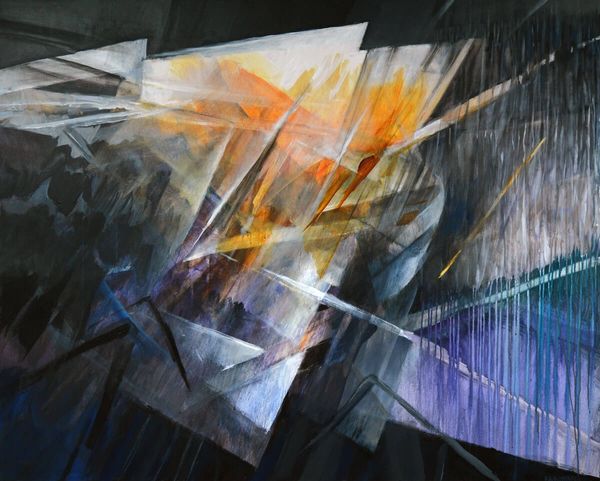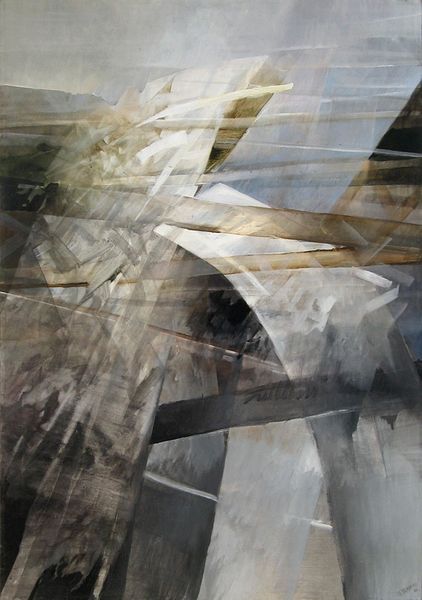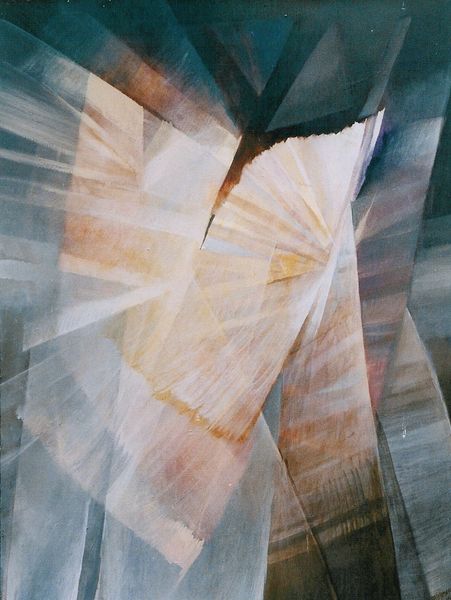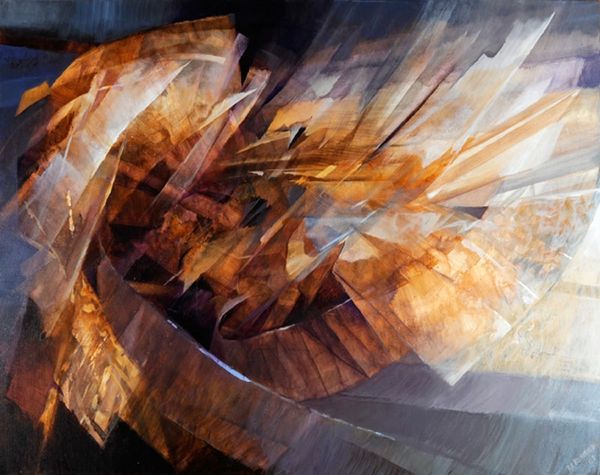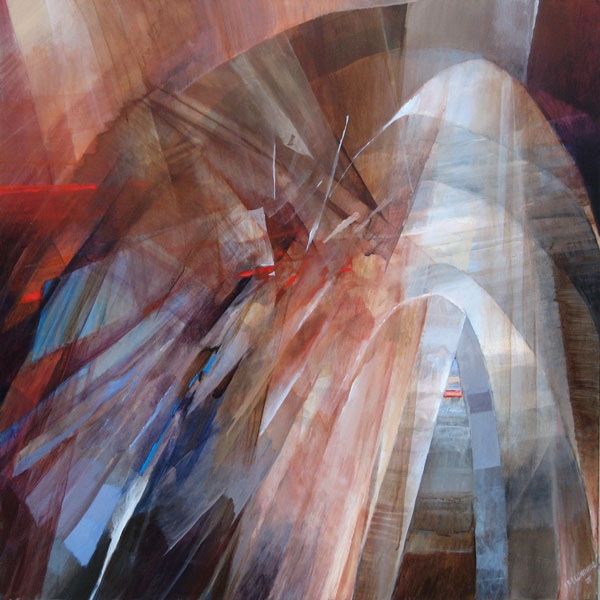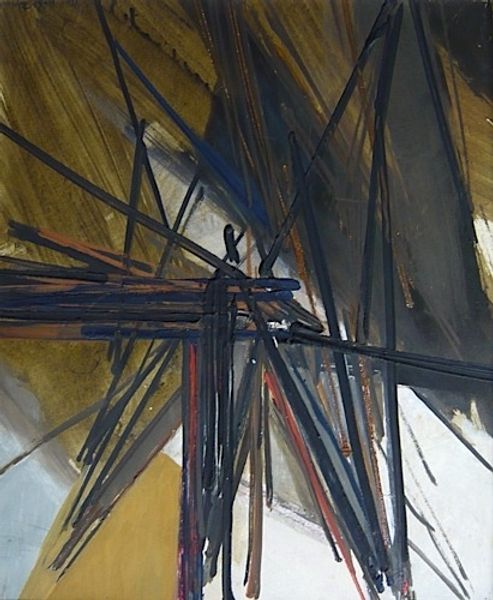
Dimensions: 121.92 x 172.72 cm
Copyright: Rochelle Blumenfeld,Fair Use
Curator: Here we have Rochelle Blumenfeld’s “Gathering II” from 2010, executed in oil paint. My first thought is that there’s an almost ethereal quality. Editor: Ethereal is right. It feels simultaneously grounded and incredibly light. All those muted browns and grays, layered, give a weight, but the angles and transparencies evoke movement. Curator: The layering is significant; it speaks to the abstract expressionist movement that Blumenfeld clearly aligns herself with here. Beyond the formal qualities of the abstract form, how do we interpret "Gathering," or the act of assembling? Editor: I see a real tension here. The implied movement is not chaotic, it feels directed towards a singular container – like gathering as an act of resource collection, perhaps for an established structure, or even an oppressive regime. But it's ambiguous, isn't it? Curator: The ambiguity is part of the point. Abstract expressionism as a movement positioned itself during the Cold War, suggesting ideas around individual feeling that resists, say, propagandist Soviet art. So what do you make of the role of the lone, somewhat undefinable lines? Editor: They make me uneasy, especially when contained. Those vertical lines, trapped, evoke themes of isolation and restriction. Are they trapped within a societal framework? Does the 'gathering' serve a function that isolates these individual actors, represented by the lines, in some way? Curator: Or does it speak to the human desire for structure and meaning, finding connection in a way that paradoxically restricts freedom? You know, as a historian, it’s interesting to see these connections across movements that we normally would think of as disconnected. Editor: Absolutely. It underlines the continuous social dialogue between an artwork and a public. “Gathering II” doesn’t provide easy answers, which, in the end, is where its power really lies. Curator: I agree. This painting leaves one contemplating the multifaceted nature of collection, community, and constraint. Editor: Yes, and considering the nuances of the spaces between these shapes, as much as the shapes themselves.
Comments
No comments
Be the first to comment and join the conversation on the ultimate creative platform.
